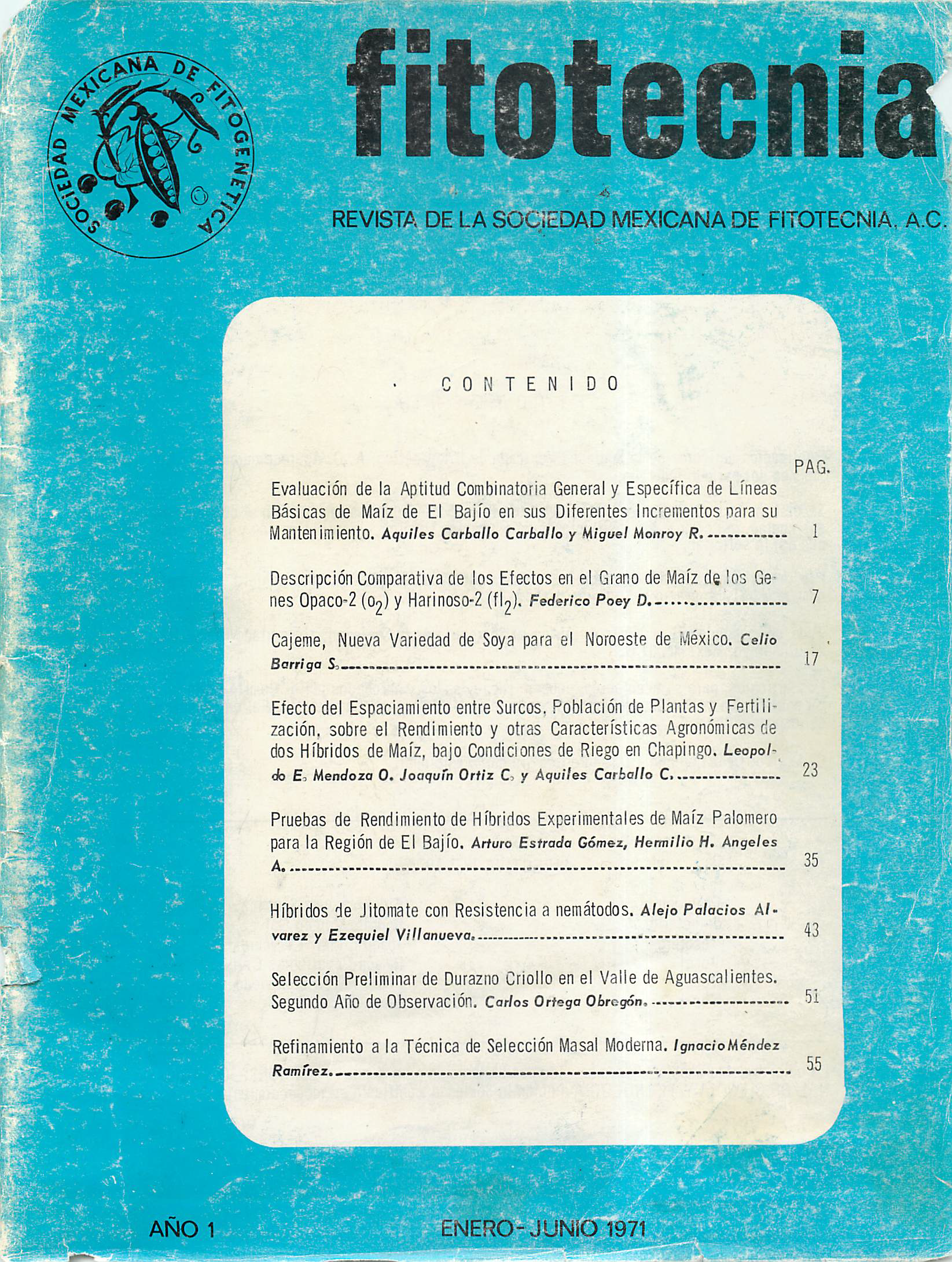CAJEME, NEW VARIETY OF SOYBEAN FOR THE NORTH EASTERN OF MEXICO
Main Article Content
Abstract
The Cajeme variety adapts and develops better un der the climatic conditions of the Valle del Yaqui than the Hood, Davis, Dare and Hill varieties. This is trueeven in clay soils with poor drainage typical of the main part of the region; fur thermore,it is more resistant to threshing than the above mentioned varieties. In the northwest oí Mexico most of the soybean area is planted after wheat regrowth, which is harvested since the beginning of April until the end of May, allowing very little time of plan ting on the recommended date (April 15th. to May 3lst.). This situation forces the farmer to delay soybean planting until June 15th. On th e lote planting dates (June Ist. to lSth.) the Cajeme variety yielded 743 kg (average of 2 years)more than Hood. The Hood variety is considered the best yielding in commercial plantings in the area. Cajeme grows taller than the other recommended varieties for the Nortwest and is resistant to the prevalent hreeds of mildew in the region . This variety is classified in group six (vegetative cycle 140 days). The soybean variety Cajeme, Glycine max (L) Merr. is an individual selcction in the F6 generation of the N-44-92 x Lee cross made in CIANO in 1961.

